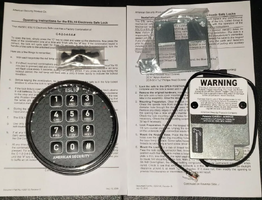1903Collector
NES Member
So due to a bunch of different circumstances I need to drastically rework My gun storage and part of that is a larger safe, My dilemma is twofold, I can't spend more than 2k and that includes any delivery fees and the safe can be no more than 40" wide as that's the space I have dedicated for it. I realized at that price point I'm not getting top notch, not even middle notch probably but i'm ok with that as any of the safes I'm looking at are already better than what I have now.
So far I have looked at Cannon and Liberty. Now the backdoor code thing aside I like the fact that Liberty's are USA made and they use a bit thicker steel, what I really, really, don't like is they don't have backup keys for when the electronic lock fails. The Cannon's on the other hand are made in Mexico, not crazy about that, but they do come with a backup key.
The safe will be in the basement gun room, I thought about relocating it upstairs but the weight on the one's I've looked at so far are in the 650lb range and fully loaded we could be close to 1000lbs. I don't think my floors would like that much dead weight concentrated in one area.
There don't seem to be a lot of options in welfare safe land, at least not in the size/price I'm looking. Any other options I'm missing here? any other brands I need to look at?
So far I have looked at Cannon and Liberty. Now the backdoor code thing aside I like the fact that Liberty's are USA made and they use a bit thicker steel, what I really, really, don't like is they don't have backup keys for when the electronic lock fails. The Cannon's on the other hand are made in Mexico, not crazy about that, but they do come with a backup key.
The safe will be in the basement gun room, I thought about relocating it upstairs but the weight on the one's I've looked at so far are in the 650lb range and fully loaded we could be close to 1000lbs. I don't think my floors would like that much dead weight concentrated in one area.
There don't seem to be a lot of options in welfare safe land, at least not in the size/price I'm looking. Any other options I'm missing here? any other brands I need to look at?



